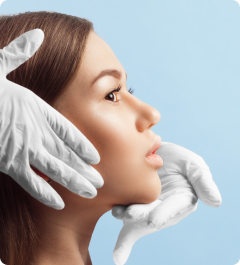As I compose this latest newsletter, I can’t help but notice the 10cm of fresh snow that we have just received. Spring certainly seems a long way off. With the eternal optimism that defines Albertans, I am confident that we will soon be enjoying Alberta’s long sunshine-filled days as we pursue our favorite outdoor activities.
Albertans annually receive some of the most hours of sunshine in the entire world, despite our snowy winters. While this is great for honing our cycling or golfing skills, it also puts us at risk of developing skin cancers, such as basal or squamous cell carcinoma as well as malignant melanoma.
While my practice is not focused on skin cancers, every year I detect several early facial skin cancers, including melanomas on patients that come to see me for other problems. Fortunately, most facial skin cancers are slow growing and when detected and treated early, cure rates most favorable.
These skin cancers are caused by solar (sun) radiation and many factors increase our chances of developing skin cancers. These include occupation, genetics, skin type, pigmentation, time of day exposure and believe it or not, elevation. In general, someone such as myself, a Fitzpatrick type I skin – very white with little pigment, always burns – is at a high risk for skin cancer. Between 10:00am and 3:00pm, solar intensity is at its highest, and consequentially, the risk is greatest. There is a 4% increase in sunlight intensity for every 1000 foot rise in altitude above sea level. Generally speaking, our best defense is the liberal use of sunscreen with an SPF above 30 and to always wear a hat. It is also important to remember that prolonged sun exposure causes photoaging in which the skin loses elasticity causing a dry, wrinkled leathery appearance that is cosmetically unappealing and very difficult to correct. In other words, the best treatment is ALWAYS prevention.
With spring on the horizon, we also see a significant increase in interest in cosmetic interventions both surgical and non surgical. I suppose as the days grow longer and the sun starts to shine, our focus often shifts to maximizing how attractive we want to look and feel. In my practice, I see an increase in surgical consultations and procedures between April and September. Some of this is related to vacation time and school schedules. However, some of it due to our brains awakening after the long dark winter.
As always, we advise patients to plan well ahead when contemplating surgery. While we strive to do our best, there are occasions when we cannot accommodate the last minute request.
Have a great spring – remember lots of sunscreen and wear a hat!



